
The Marketer's Guide to Programmatic Advertising
Be the catalyst for accelerating brand growth. Learn how to become an agile marketer and drive superior performance with the disruptive power of Al-fuelled advertising.
Book your free performance advertising consultation now.
Acquiring as many new customers as possible for the lowest cost is an ongoing challenge for any ambitious marketer.
We’re here to help you adapt to new marketing challenges and establish digital advertising as your biggest driver of brand growth and revenue.
The Marketer’s Guide to Programmatic Advertising,
© ADGILITY 2025
01 Introduction
Programmatic advertising. Sounds scary, doesn’t it? Driving better return on your ad spend, reaching more people, improving your targeting and scaling your business shouldn’t make you afraid. If it does, turn back now.
But if you want to outpace your competition (and impress your boss while doing it), you’ve come to the right place.
By downloading this guide, you’ve taken one more step towards becoming a more confident, data-driven and effective marketer. Congratulations! Your customers (and your bottom line) will thank you.
Yes, there’ll be big words. And yes, there’ll be enough acronyms like DSP and PMP to make you scream ‘OMG!’.
But you can bet your bottom advertising dollar that there’ll be practical takeaways on how you can get started with programmatic today. So, in a nutshell what does programmatic bring to the party? Glad you asked:
- More targeted, relevant and personalised advertising
- Reach larger audiences across multiple channels, devices and ad formats simultaneously.
- Real-time visibility into the performance of your advertising.
Ready to learn what’s it’s all about? Simply enter your email below to gain access to the entire Guide online and we'll also email you a downloadable copy.
01 | Forward from the Author
Forward from the Author
Leah Daly
Co-Founder & Media Director, Adgility
(subsidiary of Cherry Media Group Pty Ltd)
Confessions of a media strategist
The first time I heard the word ‘programmatic’, it sounded more like something fit for the IT industry, not advertising. I couldn’t even pronounce it let alone get my head around what industry experts were labelling ‘ad tech disruption.’ Word on the street was that programmatic was going to change the ad industry forever, put traditional media in more decline than ever and put media strategists like me out of a job forever..!
Fast-forward to 2019/20, we know that those ‘doom and gloom’ predictions weren’t so accurate. Programmatic advertising has revolutionised the way we buy and sell media, and it has put strain on traditional media, but for all the right reasons.
In short, for marketers and brands, programmatic has made digital advertising more transparent and measurable, for agency it has cut down long complex processes and made it easier to improve campaign performance through enhanced audience targeting tools. And, most importantly, consumers can now enjoy exposure to more relevant and personalised advertising from the brands they love.
Reading this Guide
The style of this guide is friendly and conversational, written in plain English so it can be picked up and understood by any forwardthinking marketer, regardless of your experience or exposure to programmatic advertising.
I’ve written it from the heart; attuned to my own experience as a marketer feeling, at times, completely overwhelmed and out of my depth trying to learn a new language and method of media buying without being bogged down by all the technicalities. The content is reflective of what I came to understand that all marketers, like you, will appreciate as easy reference material on your journey to better omnichannel advertising.
The Game has changed.
I think what drives my enthusiasm the most about programmatic is how it has levelled the playing field and brought more accountability to all advertising media, not just digital. No longer do brands need big fat budgets to scale brand awareness and build market share. I’ve seen first hand how strategic marketers, adept in learning and employing new ad tech methods like programmatic, have stormed the market and disrupted it faster than their competitors can pronounce ‘pro-grow-mattic’.
I can’t guarantee that your journey with programmatic will be all smooth sailing or solve all your marketing problems overnight, however, if you approach it with gusto and an appreciation of what you will learn (starting with this guide) along the way, programmatic will present a wealth of opportunity to scale your brand presence, protect and grow market share faster and more cost effectively than any other digital advertising method available today.
01 | Executive Summary
Executive Summary
In simple terms, programmatic advertising involves buying digital advertising using automated software in a kind of real-time auction. Think eBay on steroids. Audiences can be reached across a range of platforms including web, social media, mobile devices and even, to some extent, traditional platforms like TV and out-of-home. Because it’s real-time and automated instead of manual, the price is decided at the time and place of purchase, so advertisers always get premium ad placement at a much lower cost.
More importantly, programmatic and its underpinnings of artificial intelligence allow advertisers to set criteria about the audience and platforms they want to reach.
That’s good news for marketers because programmatic advertising is not only less expensive, it’s more targeted and responsive. By being able to specify both the content of your ad and the audience to which it is delivered in real time, programmatic closes the gap between marketing technology (martech) and advertising technology (adtech).
It also allows you to reach more people across more channels, to target and track ad impressions all the way to a sale, gain an accurate and accountable view of where the ad is placed, and measure the performance of a campaign as it’s happening. And this all leads to helping you grow, protect and sustain revenue for your brand.
Six Essential Steps to Programmatic Success
Programmatic advertising is an integral component of omnichannel marketing, which means if you’re looking at taking advantage of omnichannel, programmatic is a vital part of the process. According to data from Google, 98 per cent of shoppers switch between devices or platforms in a single day, so it should come as no surprise that omnichannel marketers achieve 90 per cent greater customer retention year-on-year than marketers who don’t take advantage of omnichannel.
There are six steps to a successful omnichannel (and therefore programmatic) journey. The first step is to make sure you set your goals and determine how they will be measured — that includes putting together your team and making sure everyone is aligned on what you want to achieve. Then, develop a great strategy (this guide will help with that), and design and develop the creative. Once that’s done, onboard and implement the programmatic software and plug in your data sources (first-party as well as third-party). You can optimise your campaign and goals as you go along (for example, re- allocating budget to the best-performing elements of your strategy and dropping under-performers). Finally, don’t forget the importance of understanding the data programmatic gives you — this helps you measure, analyse and report on outcomes.
The guide you’re holding now offers step-by-step advice on each of those steps.
01 | Executive Summary
How to Engage the Right Programmatic Partners
When choosing programmatic partners, you have the choice of two approaches: go direct or go through an agency. Going direct is only viable if you have the expertise in-house to optimise and manage campaigns and can deal with the major platforms directly.
For most brands getting into programmatic, an agency relationship is a much better way to go. Agencies generally possess a wider array of capabilities — which they can apply to your campaign. And because agencies typically work on multiple campaigns for multiple clients you can leverage the ever-growing pool of expertise they develop. They can also manage the technology, avoiding another potential headache.
But here’s an important pro tip: make sure everyone at the brand and the agency understands the rules over data ownership and use.
Both approaches have their benefits, but an agency relationship allows you to sit back and achieve your goals with fewer hiccups along the way.
We also profile two of the dominant supply-side platforms in programmatic: Oath Ad Platforms and AdRoll. Each of these platforms has its own strengths and specialities, as well as weaknesses. Not every platform is a good fit for every marketer, and much depends on your goals and strategies.
Real-Life Experience
The guide concludes with four case studies of brands that have taken on a programmatic approach:
-
Stamford Hotels and Resorts, which used programmatic to differentiate itself amid the rising influence of online travel agents.
-
Ipstar Broadband, which managed to gain a profile as a telecommunications provider in regional Australia despite the massive reach of Telstra.
-
Australian Family Lawyers, which leveraged programmatic to stand out in a rapidly changing online legal field.
-
PureForm Golf, which leveraged contextually relevant ad environments to find the right customers at the right time and become Australia’s leading custom golf club fitter.
Each of these businesses embarked on its programmatic journey with the same questions you no doubt have embarking on yours, and each found success with the help of partners and guidance like you will find in the guide you hold in your hand.
By investing the time to read this guide and getting an understanding of the core principles of programmatic, you will be well-equipped to start your own journey. It’s one of best and most rewarding investments you will make.
The Cost of Programmatic Advertising
No two businesses are the same. Therefore, no two businesses will have the same objectives when setting out on a programmatic campaign. And while campaigns may vary in budget size, programmatic is without doubt the best way to achieve scale on a limited budget.
The beauty of programmatic is its agility. This guide also explains how to set a budget for a programmatic campaign according to the specific goals of the advertiser. It considers factors like the starting point (this might include existing web traffic and resources such as databases), performance indicators, how long the campaign is expected to run and what other resources may need to be employed to help it reach its goals.
Before we dive in
Glossary of Key Terms
If you’re new to programmatic advertising, the acronyms, jargon and technical terms can be intimidating. But rest assured; all of these concepts will start to make perfect sense as we move through this guide together. And if you’re ever in doubt, use this quick glossary as a refresher of key terms.
1st party data - Information gathered by websites about their visitors behaviour. Often considered the most valuable and accurate data.
SSP - A supply-side platform (SSP) is a software platform that allows advertisers to automate the selling of ad inventory on exchanges, DSPs and networks.
Ad Exchange - A virtual marketplace where suppliers sell ad impressions to buyers. Ad exchanges announce each impression in real time and ask buyers if they're interested in purchasing the impression at the given price
2nd party data - First-party data bought directly from a publisher or DMP.
DMP - A data management platform (DMP) is a system that allows advertisers and publishers to use data (like cookie information) to optimise the buying and selling of ad impressions
Viewability - A measurement of advertising impressions that are actually viewed by the website visitor. E.g. if an ad loads at the bottom of the page but the website visitor doesn’t scroll past the top, that impression isn’t considerable viewable.
DSP - A demand-side platform (DSP) is a software platform that allows advertisers to automate the buying of ad impressions
CMP - A content management platform (CMP) is an online software that allows the creation of multiple ads of differing sizes and formats at speed through machine assistance
Of course, there are several more terms related to the programmatic discipline. But a basic understanding of the above will put you in good stead (and impress your marketing friends too!).
SSP- A supply-side platform (SSP) is a software platform that allows advertisers to automate the selling of ad inventory on exchanges, DSPs and networks.
RTB - Real-time bidding (RTB) is the buying and selling of ad impressions using ad exchanges and platforms, where price is automatically adjusted according to demand.
The Marketer’s Guide to Programmatic Advertising
© ADGILITY 2025
02 Understanding Programmatic Advertising
What is Programmatic Advertising?
Programmatic advertising uses software to buy digital ad space, most often in an automated, real-time bidding process. It allows advertisers to reach specific audiences across social channels and a vast ecosystem of websites around the world, in multiple format across all device types. The programmatic advertising landscape is even evolving to include traditional channels like TV, digital out of home and audio.
Why is it Different?
The buying and selling of digital advertising has traditionally been a manual process involving human negotiations. With programmatic advertising, however, the sale of ad space occurs in real time; powered by artificial intelligence that learns to bid effectively based on the advertiser’s parameters. It’s helpful to think of the programmatic process as a live auction, with the advertiser paying only what the ad space is worth and how relevant the space is at that exact moment in time.
Advertisers can set up their bids according to several criteria, such as the prospect's location, demographics, time of day, day of week, browsing data, search behaviour, device type and internet browser. The result is more targeted, efficient and measurable advertising.
By Reading This Guide, You’ll Learn To..
Here are five key takeaways you’ll gain from reading the rest of this guide.
1.Reach more people
Programmatic buying empowers brands to reach the larger audiences with tailored messages across multiple channels, formats and devices simultaneously; capturing attention when it matters most.
2. Target the right audience
As the holy grail of audience targeting, programmatic uses intelligent customer insights and live, in-market audience data to reach more suitable prospects, increase engagement and drive better ROI.
3. Measure more effectively
Real-time advertising analysis allows brands to optimise campaign performance by being able to see what kind of customers are viewing their ads, where they’re seeing them, on what devices, and exactly when they decide to take action.
4. Personalise the customer journey
Create intimately personalised, highly relevant ads at scale using time-efficient dynamic templates and automated processes that eliminate complexity, cut down creative costs and inspire action.
After all, there are more than 3.2 billion active internet users in the world, and programmatic allows advertisers to access almost all premium website display inventory (up to 98% in Australia).
5. Enjoy superior performance
Programmatic buying provides businesses of all sizes a more efficient, effective and affordable way to advertise. Its transparency and measurability allow brands to optimise their campaigns and get more ROI from their advertising budget, whether it’s $50 thousand or $5 thousand dollars.
By now you may be thinking “gee, this programmatic stuff sounds like hard work.” But stick with us, it’s worth the acronyms and obtuse explanations. In the next chapter, you’ll gain a practical understanding of how you can get started with your own programmatic campaign today.
The Programmatic Advertising Process
The programmatic advertising process involves multiple parties, criteria and of course, acronyms. But in the simplest terms, the process involves:
- A publisher receiving a site visitor.
- The publisher matching the site visitor’s profile to a suitable advertiser who is bidding in a real-time auction.
- The publisher serving an ad and sending information back to the advertiser.
In more sophisticated terms, the programmatic process involves:
- The advertiser bidding for impressions that fit inside their budget and targeting parameters.
- The publisher seeking to fill all of their ad inventory at the rate dictated by the market.
- A programmatic algorithm using real-time data to find the best online audiences and bid on ad space across devices.
Confused/ Still unsure? This video unpacks the programmatic buying and real-time bidding process in a 200ms lifespan:
3 Types of Programmatic Ad Buying
There are three categories of programmatic ad buying, which define how the ad inventory is bought and sold:
Programmatic Open Auction (POA) also referred to as Real Time Bidding (RTB) allows an advertiser to bid on individual impressions, much like an auction, rather than agreeing to a pre-determined fixed pricing. Buying in real time is more cost-effective, reduces waste and can prevent advertisers from overpaying for media.
Programmatic RTB also offers more control and flexibility over the performance of campaigns, allowing agencies and advertisers alike to track adjust channels, creative, budgets and bids, all in real time.
Private marketplace (PMP) is an invite-only variation of the RTB model whereby the terms of the deal are pre-negotiated between the buyer and seller but not necessarily guaranteed (eg specific site/s or network/s, rate, type of inventory, audience).
This method is typically offered by publishers with more premium (i.e. coveted and expensive) inventory—think major media sites like smh.com.au or The New York Times.com.
Programmatic Direct is a one-to-one media-buying process much akin to the traditional method whereby salespeople met with advertisers in person to strike a deal.
It is a very similar model to the private marketplace (PMP), with the exception that advertisers and publishers agree on specific inventory based on a fixed price (CPM) that is guaranteed to run across specific networks or publisher sites.
Programmatic Prospecting & Retargeting
The Marketing Funnel Re-imagined
As a marketer, you’d probably be familiar with the concept of ‘prospecting’ and ‘retargeting’ and the fundamental role they play in driving consumer demand across most advertising channels - traditional and digital.
Programmatic follows all the same fundamental principles of advertising, however, the application of finding new prospects/opportunities and converting them is vastly different. This is just one of the things that sets programmatic apart and puts it way ahead of the game.
This might sound like jargonistic mumbo jumbo, but bear with us - this bit is important and may just help you understand why programmatic is the fastest growing method of digital advertising today.
Let’s take a look at the differences between standard and programmatic prospecting and retargeting.
Standard PROSPECTING – seeking out potential new customers using demographic targeting applied across contextually relevant environments on a single website or network.
For example, a local hotel brand advertising on the SMH Traveller website is looking to reach a ‘travel intender’ audience, in the hope they may be looking to book a hotel room. This contextual placement is usually bought on CPM (cost per thousand impressions) rate, locked in over a period of time and generally not tracked to customer acquisition.
Standard RETARGETING – bringing back prospects who have simply landed on your website and displayed non-specific behaviours.
For example, you’ve been on a travel website looking for places to go for an overseas snow holiday. For weeks after, you keep getting retargeted by a local hotel brand selling ‘summer saver’ packages.
PROGRAMMATIC PROSPECTING – uses data to reach and connect relevant new audiences across multiple channels, ad units and devices simultaneously.
For example, a hotel brand selling summer packages is looking to connect with new audiences that have showed recent online behaviours (low or mid intent) for booking a hotel or summer holiday, short term stay in a relevant metro city location.
PROGRAMMATIC RETARGETING – re-engages past visitors based on their behaviour on your website. The prospect is identified as being ‘low, mid or high’ intent as the AI learns where and how they should be re-engaged to have the best likelihood of conversion at the lowest cost.
For example, you’ve been researching overseas snow holidays online for a few weeks and decided on a preferred destination and price point. You’re reading an article on your favourite news website and an ad catches your attention from a snow vendor offering the right destination at the right price. You click through and book the deal.
Programmatic ‘closes the gap’
Ultimately, having the ability to determine the format or type of content to include in your advertising message, delivered to an individual at just the right time can maximise engagement levels – without the need to run two completely independent campaigns.
Both prospecting and retargeting methods that combine the use of AI with ad bidding technology (RTB) can effectively ‘close the gap’ by honing in on a single opportunity rather than relying on broader audience clusters. Individual users can be targeted and retargeted based on an infinite combination of previous activities and preferences, speeding up the process of prospecting and retargeting, eliminating wastage and maximising conversion rates. The promise of ‘every ad impression counts’ delivered!
The Programmatic Vendor Ecosystem
There’s a lot of technology involved in programmatic advertising, and as such, there are a number of competing technology platforms that marketers can choose from. Below are some of the main players within the programmatic vendor ecosystem and a brief description of what they do.
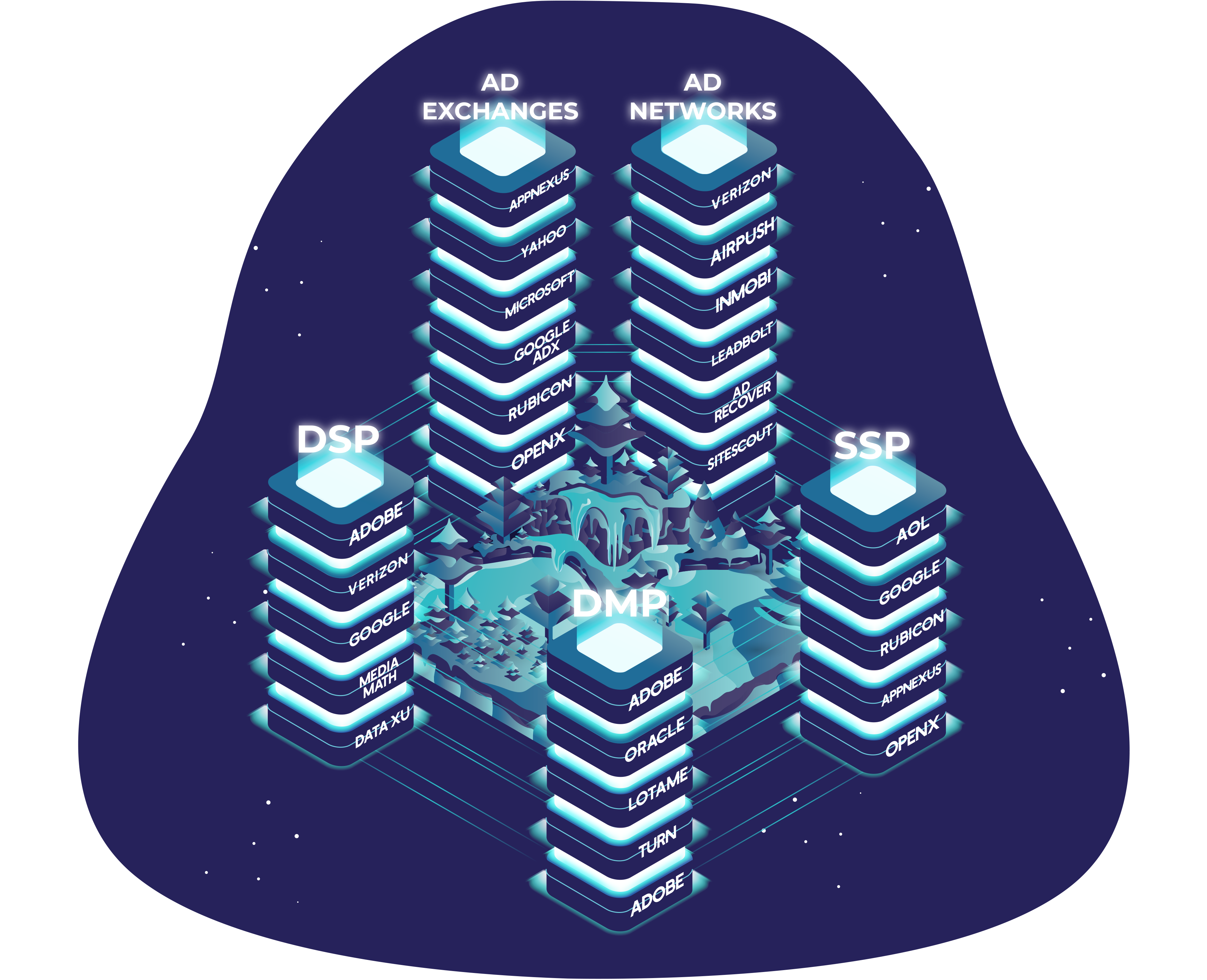
DMPs
As you’ll remember from our glossary of key terms, a DMP is a data management platform, which essentially houses the information publishers need to sell their ad impressions and the data advertisers need to buy them.
For marketers like yourself, DMP's provide a detailed view of your audience, including demographics, online behaviour, personal interests and more. DMPs integrate with DSPs and SSPs (try saying that 10 times fast), to ensure your ads are reaching the right audience for your campaign goals.
DSPs
Demand-side platforms (DSPs) are where a lot of the magic happens for advertisers. They’re the software platforms that use artificial intelligence to automate the buying of ad impressions, target specific audiences, and bid for ad inventory in real time.
It’s also worth noting that some agencies offer their own custom buying platforms (also called trading desks), that use some of the technologies listed above.
SSPs
Supply-side platforms are where the magic happens for publishers. They can be considered the publisher equivalent of a DSP; allowing publishers to manage and sell their ad inventory in an automated fashion. But whereas DSPs aim to buy ad space at the lowest rate, SSPs aim to sell it at the highest price. It’s a technology war, people!
Exchanges
An ad exchange is a virtual marketplace where suppliers sell their ad space to buyers. I hear you asking “but wait, don’t SSPs do that?” It’s helpful to think of an ad exchange as the middleman between demand-side platforms and supply-side platforms.
In more technical terms, they announce the impression in real time and ask automated buyers if they’re interested in bidding for it.

Ad Networks
Ad networks are a little different; they gather an inventory of unsold ad space and sell it to advertisers, taking a cut in the process. Ad networks also offer to manage the campaigns and targeting on behalf of agencies and advertisers, so you can think of them like outsourced programmatic media companies.
Why are Marketers Embracing Programmatic Advertising?
Are you still with us? Holding up okay? Pour yourself a coffee and relax because it gets easier from here. By now you should have an understanding of the technologies, process and acronyms involved in programmatic advertising. Now it’s time for the fun part; what exactly do marketers and advertisers gain from using it?
To answer that question in three simple ways, marketers gain:
-
Brand Scale without the price tag.
-
Total visibility and transparency on the performance of their ads.
-
Improved marketing performance across all media channels.
Still unsure? Below are the top 10 key benefits of programmatic in more detail.
Top 10 Key Benefits and Business outcomes using Programmatic Advertising Technology
1. Reach more people across more channels
As we mentioned earlier, mass media such as TV and radio were once considered the best way advertisers could reach a large audience but you also needed a pretty big budget ... Programmatic doesn’t just offer a vastly cheaper alternative; it also connects advertisers to just about anyone who uses the internet, and there’s a lot of them.
According to a report released in Jan 2018 by Hootsuite and We are Social, Digital in Australia, 88% of Australians (21.74 million) are active internet users. 90% of them spend more than 5 hours a day on the web, compared with 3 hours watching TV.
Better yet, it allows advertisers to connect with these people across multiple channels, whether that’s while they use the desktop at home, the phone during their commute or even TV while watching their favourite show. In a nutshell programmatic bring big scale minus the big price tag.
2. Superior Targeting
What if you could reach a precisely defined audience with a tailored and contextual message, and then track their behaviour post impression all the way to conversion? Programmatic advertising is the holy grail of targeting, using Artificial Intelligence (AI) to enhance the machine learning process so the technology can work towards more accurately 'predicting' who is likely to be interested in your products or services so it can find them a lot faster for less media expenditure. In programmatic terms, this is referred to as the activation of 'predictive audience segments'.
3. Transparency
If you’ve ever embarked on an outdoor advertising campaign, you’ll know that reporting the results to your boss is no simple task. With programmatic advertising, you gain an accurate view of where your ad is placed, who is seeing it, what they’re doing after that and how much the entire process is costing you - all in real time!
4. Real-time Measurement
You’ll hear a lot about ‘real-time’ when researching programmatic, but what does it really mean for your ad spend? Being able to measure your performance as it happens allows you to make changes as you see fit. There’s no need to wait until the campaign has wrapped up before gaining clarity on your results.
Real-time measurement means you will become a better more data-driven marketer, equipped to react with speed and agility, taking advantage of market trends and developing messages that are resonating with audiences before your competitors do.
5. Grow and Sustain Revenue
When first embarking on a programmatic campaign, you’ll notice the sheer volume of new visitors to your website and a gradual uplift in performance from your other marketing channels. Programmatic develops learnings from multiple channels at the same time, bringing more qualified traffic into your sales funnel and and cutting down the time [and cost] it takes to acquire a lead or sale.
They key to sustained revenue growth from programmatic is maintain momentum over time. AI learning models become more powerful over time and for most marketers who stick it out and run programmatic as a stable benefit from being able to forecast ROAS (return on ad spend) and revenue generation on a monthly or quarterly basis.
The benefits are far reaching. Support, nurture, nourish, carry on.
6. Brand Safety
When done poorly, display advertising can do far more harm than good. Imagine your brand’s advertising placed beside upsetting, offensive and illegal content online. Not ideal. And in the words of Richard Branson, “It takes 20 years to build a reputation and 5 minutes to ruin it.”
Nowadays, most advanced programmatic demand side platforms come with built-in brand safety features and software that ensure your brand will only run with brand safe networks and publishers.
7. Become an Agile Marketer
You’ll hear a lot of marketers say obtuse things like “digital success hinges on speed” and “if you’re not agile, you’re not winning.” What does this really mean? Agility is all about having the resources and capabilities to make things run more efficiently, improve performance and react to information in a timely way; all things that programmatic allows.
The agile nature of programmatic means that nothing (including how your budget is being spent) is set in stone.
8. Get Personal
The days of ‘spray and pray’ are over. No longer can the big brands rely on the power of big ad budgets, spraying audiences with irrelevant messaging, praying they’ll catch a few engaged souls along the way.
Advertising should be personal because consumers demand it and quite frankly - your brand survival depends on it. Your message needs to be relevant to the right people and to resonate with them at just the right moment.
The ability to conduct omnichannel advertising campaigns that can be governed by advanced creative techniques such as dynamic creative optimisation, makes programmatic a highly personalised approach. It also allows consumers to develop a closer affinity with your brand because you’ve delivered a more personal advertising experience. Better yet, you’ve delivered digital moments that matter.
9. Gain Cost Efficiency
Have you ever researched the costs of a Times Square billboard or even one on the road into Sydney airport? Hint - it’s expensive.
But programmatic doesn’t just present a more cost-efficient option because it’s digital. The real-time bidding process that is powered by artificial intelligence ensures you’re getting the optimum price per impression every time. You’re paying what that ad space is actually worth to reach a particular prospect in respect to their online and offline behaviours. Even better, you can set your own parameters for what you’re willing to pay for an ad impression based upon lots of different criteria such as specific URLs, user behaviour, demographics, ad units, time of day, day of week, location etc.
10. It’s Getting Easier
Programmatic isn’t the most recent innovation, however, it’s becoming increasingly accessible to smaller businesses with modest media budgets. More technology players in the market mean that programmatic is no longer just for the big brands. The opportunity for smaller companies to compete with the big names, and to disrupt their industries, has never been greater with programmatic advertising.
The barrier to entry for smaller businesses was also accessing the expertise needed to set up a programmatic advertising campaign and keep it performing at optimal levels. Now it’s becoming easier and more affordable to leverage programmatic specialists and great agency partners to help you manage an effective programmatic campaign designed to achieve your unique business goals.
The Marketer’s Guide to Programmatic Advertising
© ADGILITY 2025
03 Getting Started With Programmatic Advertising
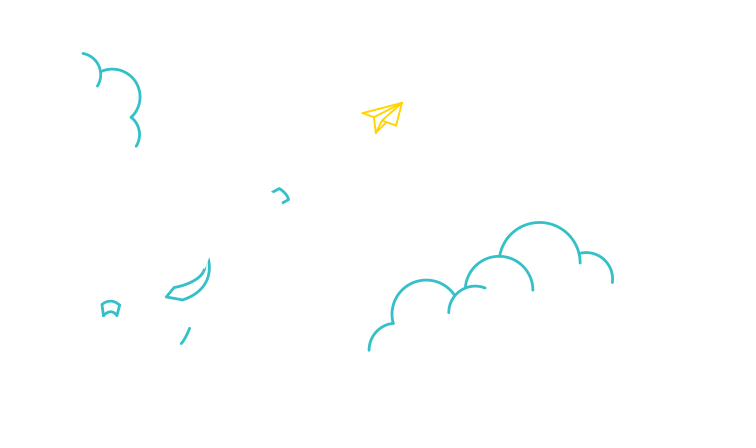
In this section, we get our hands dirty with outlining the mechanics of programmatic success. From strategy to optimisation and everything in between, we unpack just what it takes to launch your programmatic mission and keep it on track.
But first...
Is Programmatic Advertising the Right Fit for Your Business?
Perfect for you if… you’re interested in better omnichannel advertising.
If you’re looking for ways to improve your omnichannel marketing, or just dipping your toes into providing a personalised cross-channel experience, programmatic advertising is an efficient and effective tactic.
Omnichannel is a staple of any positive customer experience, which is one of the biggest drivers of loyalty, referrals and revenue today. Consider these three statistics:
- Companies that use omnichannel marketing achieve over 90% greater year-on-year customer retention (Aspect).
- 98% of consumers switch between devices on the same day (Google).
- Omnichannel consumers have a 30% higher lifetime value than single-channel shoppers (Google).
Perfect for you if… you want to drive demand while reducing the cost of customer acquisition.
It’s a common consensus among digital marketers that acquisition is getting harder. Trust in businesses is eroding, previously high-performing channels like email are saturated, algorithm updates have rocked the boat on social media, and the ever-evolving face of Google search results is stalling organic traffic for smaller players.
In fact, research conducted by ProfitWell found that customer acquisition costs increased by almost 50% from 2013-2018, with organic acquisition costs rising the fastest.
So, what’s the answer? TechTarget’s ‘How Digital Branding Drives B2B Demand’ paints a compelling picture of the impact that programmatic display can have on demand and cost of acquisition.
- “Well-targeted digital display directly lifted email response rates by over 20%.”
- “Consistent brand presence was a key factor in increasing shortlist consideration by up to 25%.”
- “Branding as part of a cross-digital-channel effort can increase the sales pipeline by a factor of more than 2X.”
Perfect for you if… you’re willing to learn the basics, find the right partners and choose the right tools and technology.
Finding your feet with a new marketing approach isn’t always straightforward, and you’ll never be an expert straight out of the gates. Your success in the early stages will depend on your research (you’re already halfway there reading this Guide) and the quality of partner that you enlist to help you along the way.
On the other side of the coin, we’ve seen how businesses with experienced, dedicated in-house resources combined with a helping hand from suppliers can achieve incredible results. They ascend their market share into another dimension and disrupt their competition faster than you can say “where do I sign!”
The Six Essential Steps to Programmatic Advertising Success
Ok, here’s where it gets real. You’ve got a good grasp on the basics of programmatic, you’ve identified a real use case within your business, and you’re ready to get cracking. In this section, we outline the six fundamental steps involved in driving a successful programmatic machine. Buckle up, it’ll be well worth the ride!
1. Setting your goals and how they’ll be measured
Common programmatic advertising goals and KPI’s include:
i) generating a percentage increase in sales and leads per month,
ii) decreasing the cost of acquiring a sale or lead online and
iii) increasing customer lifetime value over time.
However, at the end of the day, it’s about understanding and agreeing on how these goals will be measured and setting up a reliable infrastructure to measure them accurately that will ultimately determine your long-term success with programmatic advertising. In programmatic advertising, this practice is referred to as attribution.
Don't be short-sighted.
Don’t be fooled by the old metrics of ‘first click’ and ‘last click’ attribution, save these ones for your search campaigns. As a full-funnel advertising method (brand introduction to customer acquistion and retention strategies), you’ll be leaving valuable ad dollars on the table if you are purely focused on measuring programmatic success simply based on a lead or sale tracked to first or last click.
Programmatic advertising has both short and long term gains. However, if you want to build a sustainable brand and business for the future, the best advice I can give you is to avoid being focused on the pointy end of the funnel before you've built the proper foundations. Programmatic advertising will be your best and most cost efficient tool for finding, winning and retaining more customers; giving it a chance to work by setting up and measuring attribution points, based on your current customer journey, will simultaneously futureproof your media strategy and your brand.
Adgility's attribution case use example
For example, if you’re an eCommerce business looking to increase online sales, one attribution goal could be measuring multi-channel effectiveness via uplift in social media engagement - more shares, likes and video views. A noticeable uplift from these channels is likely to contribute to a greater lift in brand reach and awareness resulting in more online sales.
Another example is a B2B marketer wanting to increase qualified leads. An important attribution model for lead generation is understanding what media channels and specific ad formats are generating the most traffic and time on site. It may take some time for these channels to convert a higher volume of qualified leads however if their traction is being measured and attributed as part of the customer journey, then they will generally lead to more content downloads and contact forms being completed online.
2. Develop a winning programmatic strategy
Now that you’ve aligned your stakeholders, defined your goals and agreed on how they’ll be measured (attribution), it’s time to develop an effective programmatic advertising strategy. Easier said than done, but certainly possible with the right guidance.
Remember, there’s no 'one-size-fits-all' programmatic approach, so you can’t expect to buy an effective formula out of the box. Let’s look at the key elements of a programmatic strategy.
Do Your Homework
An effective media strategy always starts with a target audience in mind. An effective programmatic strategy starts with data in mind - your
You’ll need to investigate things like:
-
Your weekly and monthly web traffic.
-
What it’s costing you to bring a new visitor to your website and convert them.
-
Size of your database, social communities, apps and video channels.
All have the potential to influence what you should be spending per month, the types of ad channels and formats you should considering running, and how the programmatic ad tech will leverage all of your earned and owned assets to accelerate the delivery of your goals and KPIs.
Remember, programmatic makes every interaction between your brand and your audience smarter than the last, so take advantage of the data you currently have and grow from there.
Set an agile budget
While it’s possible to set your monthly budget in stone, the nature of programmatic advertising promotes a more fluid financial approach. The artificial intelligence of programmatic advertising is always finding faster and smarter ways to achieve your campaign goals, which is why an agile budget can give you the flexibility to take advantage of opportunities as they present themselves.
For example, if you’re a retailer focused on increasing sales volume, you may want to base your budget on what you’re willing to pay to acquire a new sale (also called cost per acquisition/CPA). If you’re focused on scaling brand awareness, you may base your budget around a cost per new visitor model (CPV) or what it will cost you to get more qualified leads to your site.
Your programmatic agency partner will be able to recommend a budget that’s based around your specific goals, taking into account your current web traffic, other owned assets, and if the lead, sale or traffic goal is viable.
Choose adtech platform/s and media channels
Deciding on your ad tech vendor is a good place to start. You’ll need to look at whether their platform is equipped to deliver on your goals, and whether it’s a good match for your budget and media channels.
Some DSPs (demand side platforms) offer an entire suite of digital advertising channels, like social, web and email. Others might specialise only in web advertising across all formats of display advertising, like rich media, native and video cross-platform.
Confused? This is where an agency partner can help and may identify a need for two complementary platforms that each play a specialist role. We talk about this in more detail in Chapter 4 - How to Engage the right programmatic partners.
Use advanced audience targeting tools
To achieve an audience-centric strategy, you need to consider what type of data (like 1st, 2nd and 3rd party) will allow you to define and reach your intended audience at scale and on budget. You’ll also need to think about scale and frequency, and how to avoid making your targeting too narrow, which will hinder your ability to achieve scale.
There are some pretty amazing audience targeting tools available today, and if you’re new to programmatic you’ll be astonished at just how much they can give you a massive head start.
Employ the right creative formats
The types of creative formats able to be deployed using programmatic software are more exciting today than ever before. The creative possibilities are becoming limitless, including formats like:
- Video
- Rich media page takeovers
- Native
- HTML5
- Dynamic social and web
It’s easy to get carried away with all the new creative options, but try to reel in your excitement and always look through the lens of your goals and KPIs.
Here are three things to consider when it comes to choosing the right creative formats:
-
Your budget: programmatic creative isn’t free and should be kept fresh; ideally updating every 8-12 weeks.
-
Less is more: A limited creative budget shouldn’t mean limited performance. Focus on creating different types of ad messages that can be deployed simultaneously across more channels.
-
Sizes: The more ad sizes you create, the more ad inventory you’ll have access to. Always remember, programmatic brings scale - use it!
Map your customer journey
Mapping out a customer journey is about being more strategic in the way you start (and evolve) a conversation with prospects to give you the best chance of making a sale. Or, in programmatic terms, it’s making sure you’re serving the right ad to the right customer at the right time.
The easiest way to get your head around creative mapping is simply relating it back to your own sales process. Think about your creative assets as
Phase 1 - Brand Awareness and Customer Engagement
For example, a customer walking in-store for the first time needs to feel comfortable about your brand proposition before feeling pressured to buy. This is like the ‘prospecting’ phase of programmatic, where your creative messaging should be structured to introduce your brand with a sequence of softer messaging to entice your prospect and engage their interest first.
Phase 2 - Customer Re-engagement and Conversion
Once they’re a little more familiar with your product range, your
Phase 3 - Campaign Optimisation and Customer Retention
As programmatic media buying involves machine learning, once the AI starts to learn who, how and when your prospects are converting, it gets smarter and faster in the way it goes about this process. Keep in mind, this process is also assisted with intelligent creative. A good agency partner will spend time understanding your sales process to map out a creative strategy that aligns with your goals and KPIs. Your ads can be easily adjusted and optimised ‘on the fly’ (more easily if they’re using creative management software) once your customer journey is better understood.
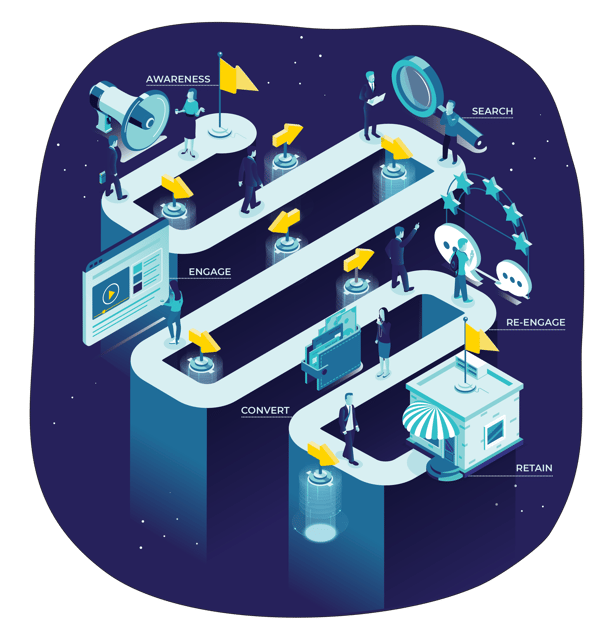
Implement brand safety
One way to sabotage a perfectly planned programmatic campaign is by forgetting to pay attention to your brand’s safety. Brand safety means ensuring your brand is not going pop up in any unsavoury websites or next to offensive content that is misaligned with your brand’s messaging and identity. For example, porn or gaming websites or content containing political violence or extremist religious propaganda.
The good news is that within the programmatic ecosystem itself, the fight to protect brand safety has come in leaps and bounds over the past 2 years, with many demand side platforms (buy side ad tech) integrating brand safety into their platforms.
ADGILITY’S Top Tips for ensuring brand safety
We only work with programmatic platforms that have best-in-class brand safety features integrated into their platform through partnerships with companies like Integral Ad Science, DoubleVerify and Comscore. These companies have developed algorithms, formulas and data-driven tools to prevent ads from ever appearing alongside undesirable content.
Also, stay away from suppliers who want to charge you additional fees to keep your brand safe. Brand safety isn't a luxury or a 'nice to have', it's mandatory and should be part and parcel of a professional programmatic strategy and campaign set up.
3. Creative design and build
As you know by now, programmatic advertising runs on data. So it shouldn’t surprise you that the creative design and build process can be informed by audience data to increase its impact and effectiveness.
Technologies like Dynamic Creative Optimisers (DCOs) and Creative Management Platforms (CMPs - yep, more acronyms) integrate data into creative asset creation in intelligent ways. For example, a shoe retailer can dynamically include products their audience have viewed within display creative - driving relevance and ad performance.
The programmatic creative process
The old adage of “content is king” still rings true in programmatic advertising. Great quality creative assets are integral to success and the demand to keep your creative relevant and fresh is relentless. Therefore, if you’re unable to take ownership of the creative process, enlist outside help from an agency that has expertise in creating programmatic digital assets at speed and in bulk cost efficiently.
The programmatic creative process can be broken down into four steps:
-
Planning: consider using a planning tree when mapping out your creative messaging.
-
Production: remember to design and build to specific ad unit specifications and formats.
-
Activation: ensure your assets are uploaded in the programmatic software with care and attention to detail so you can launch your assets with confidence.
-
Optimisation: measure and improve your creative throughout your campaign.
4. Onboarding and implementation
Without a doubt, campaign build and implementation are the stark difference between an ordinarily good programmatic campaign and one that smashes it out of the park.
A programmatic campaign consists of several moving parts, which means that things can be overlooked or under-analysed. For this reason alone, an experienced partner who sees your goals as their own is an invaluable asset and where your programmatic strategy should be followed to the letter.
What does programmatic onboarding involve?
Campaign onboarding consists of plugging in all your
What does campaign implementation involve?
Campaign implementation involves segmenting your website, applying audience insights and mapping creative assets to your customer journey. Creating a campaign that will ‘serve’ your potential customers (rather than annoy them) will be the stark difference between serving relevant ad messages to the right prospects at the right time, or falling flat.
5. Campaign management and goal optimisation
The fifth step of a winning programmatic strategy is dialling in campaign management and goal optimisation. It’s important to remember that while it’s astonishingly intelligent, machine learning won’t perform automatically towards your goals without human assistance. Yet.
Proper management of your campaign is as important in programmatic as any other marketing initiative and is most effective when run by experienced teams, well versed in how to get around programmatic
And like other marketing initiatives, success also depends on making regular strategic adjustments to your campaign to ensure all channels are firing on all cylinders and achieving your goals.
Some of the optimisations that can be made to improve the performance of your campaign are:
- Re-allocate budget towards top performing ad creative
- Delete or pause poorly performing ad channels
- Adjust ad impressions to serve over time of day, days of
week that are morecost efficient . - Adjust bid levels to win more impressions on high converting websites.
- Identify audience segments driving the most engagement and allocate more prospecting budget.
- Delete or pause retargeting segments driving up the cost to acquire a new customer.
6. Measurement, analytics and reporting
The final stage involved in a
We addressed the importance of goal attribution as the first step to programmatic success. Having a single measurement platform where you can set up goal attribution is vital and it’s this step where it comes to life.
Some fundamental things to measure may include:
- Increase in unique visitors per month.
- What creative ad units are creating the most click through.
- What channels are most efficient in converting a lead or sale.
- The geo-locations that are performing the best to bring new qualified prospects.
- Insights into what devices, demographics and audience segments are yielding the best return.
More advanced attribution can put the purchase path under the microscope; measuring which audience touchpoints are the most influential in inciting your desired action.
All of this should be relatively straightforward, assuming you’re not working with siloed, hard-to-read, inaccurate or incomplete data. Your performance information across channels should be visible from one centralised portal like Adgility Insights and Analytics.
Our intelligent reporting platform provides marketers with an omnichannel view of channel performance. It also easily integrates with your other marketing and business applications, like search, SEO email, CRM and 200+ other data channels.
Programmatic Success, Ready for Launch
With these six steps fuelling your advertising engine, you’re now equipped to launch your programmatic rocketship, navigate to your target and land it with precision and grace. Now that’s one small step for marketing and one giant leap for the bottom line!
To recap, your roadmap to programmatic success includes:
- Setting goals and how they'll be measured
- Developing a winning programmatic strategy
- Creative design and build
- Campaign onboarding and implementation
- Management and goal optimisation
- Measurement, analytics and reporting
The Marketer’s Guide to Programmatic Advertising
© ADGILITY 2025
04 How to Engage the Right Programmatic Partners
The Programmatic ‘Buy Side’ (Demand Side Platforms)
Whenever you’re adding a new platform to your technology stack, it’s important to choose a solution that meets your needs without breaking the bank. Not all programmatic ad tech was created equal, and some are strong in certain areas and weaker in others.
Some platforms are geared towards retail performance campaigns, others are killer at building scale using their own data, and others throw social media and email marketing in the mix. Choosing the right platform for your needs is a matter of research - but remember, an agency partner is also the perfect sounding board for choosing and working with the right ad tech vendors.
Let’s look into two of Australia’s leading demand-side platforms; Verize Ad Platforms and AdRoll.
Insights from Adgility’s Top Two Demand Side Platforms
Verizon Ad Platforms
About Verizon Ad Platforms
According to Gartner’s Magic Quadrant for Ad Tech report, published 11 Oct 2018, Oath Ad Platforms [now Verizon Ad Platforms] is a ‘Niche Player’ in the programmatic platforms market.
Verizon Ad Platforms is a simplified suite of intelligent advertising and publishing solutions combining the best assets from BrightRoll, ONE by AOL and Yahoo Gemini into a set of solutions that makes it easier for advertisers and publishers to partner, transact and drive growth.
Strengths
Verizon Ad Platforms bring together the intersection of ‘Culture and Code’; which brings to life ad innovation that connects with people and AI that drives results through technology.
The unified full-funnel DSP (demand side platform) combines unique data sets with a new machine-learning optimisation platform and enhanced productivity features giving advertisers the flexibility and control to manage omnichannel programmatic strategy and reach ultra-precise audiences with premium inventory across formats and devices.
Audience Data
This is achieved through Verizon DSP’s powerful intent data signals, from over 1B logged in users globally, 13m+ locally and its state-of-the-art AI predictive algorithms.
Exclusive Inventory
Verizon DSP offers exclusive access to native inventory on AOL and Yahoo! as well as the majority share of MSN inventory. This translates to more opportunities for your brand to appear across more premium ‘branded content’ sites.
“2017 saw programmatic advertising go mainstream. In 2018, adoption increased exponentially, eclipsing other traditional forms of media buying.
At the same time, consumer fragmentation across devices and channels continued to grow, fuelled by advancements in technology. VR, Smart TVs and Programmatic Audio presented untapped opportunities for marketers.
This upward trend has forced brands to get serious about understanding cross-device mapping as a means of reaching this highly desirable and always-connected audience.
Access to first party verified data that spans beyond cookies is helping to connect the dots between devices, and will continue to drive momentum in Programmatic Advertising in the year ahead.
In 2019, we will see marketers move from cookie-based targeting to true 1:1 marketing at scale.”
AdRoll
About AdRoll
AdRoll is the largest independent platform for small to midsize eCommerce businesses looking to compete and sell more online. With one of the world’s largest collections of shopper data AdRoll has 37,000 global customers and generates over $246 billion in sales each year.
Strengths
Deploy Social and Web advertising from one platform - AdRoll brings together everything you need to grow your business; from email to cross channel video, display, and native advertising, all supported by world class analytical tools to guide your marketing decisions in getting more traffic to your site, winning more sales, and developing more meaningful connections with your customers.
Access to more eCommerce data for SMB’s - AdRoll offers many integrations for fast access to customer data and to launch personalized ad campaigns. E-commerce integrations include Shopify, Magento and BigCommerce. Integrating through an ecommerce platform allows you to quickly and seamlessly plug your site into AdRoll.
“Display ads help brands reach users browsing news, email, video, and social websites on both mobile and desktop devices. This enables brands to re-engage existing users, target potential new customers and ultimately drive conversions and revenue. Here are some best practices on using a cross-channel and cross-device strategy to consider:
Your users traverse the web each and every day. They may browse Facebook on their mobile in the morning on their way into work, surf the Sydney Morning Herald on their desktop in the daytime, and flick through Instagram in the evening.
Running a cross-channel and cross-device strategy provides a more holistic view of the customer journey, and allows you to combine and consolidate efforts to reach your larger business goals. AdRoll enables the orchestration of display, social ads, and email all through a single platform.”
The Value of an Agency Partnership
A media agency takes the pressure off, drives great performance and sustains it, too. A programmatic agency partner is a good choice for you if...
You’d rather spend time and money developing your business, rather than managing the day-to-day performance of programmatic.
As we mentioned earlier, the programmatic machine involves a lot of moving parts that need to be kept well-oiled when a campaign is in full swing. If they aren’t, your campaign can quickly derail; driving up costs impeding performance.
A programmatic agency is like your ‘inside shopper’, ensuring that your campaign is set up properly, the right ad tech is in place, and that costs are consolidated across every phase – from strategy to campaign build and reporting.
What’s an Agency’s Ongoing Role?
- To understand what channels, environments and ad units are driving superior performance.
- To optimise your ad dollars towards these top performers, ensuring that all your goals and KPIs are being hit.
- To ensure the campaign is delivering the best bang for
buck possible. - To educate you and your sales and marketing team about what’s working, what’s not and what’s being done about it.
A good programmatic agency partner will provide a weekly performance report. An exceptional one will provide your own customised reporting platform, so you’re able to log on and see real-time performance of your campaigns - right down to creative ad units and site lists that are getting the most love from your audience.
Going Direct or Engaging an Agency?
Going Direct - worth the time and risk?
‘Going direct’ means placing your programmatic advertising campaigns directly with the technology providers themselves ie Verizon Ad Platforms.
It’s a viable option, however not all DSPs (
Going
Engaging an Agency - what are the benefits?
If you want a more seamless transition to programmatic display advertising, engaging a specialist agency will make life a lot easier.
Sit back, watch and learn as skilled practitioners work the magic of AI to realise your online advertising potential. Developing a relationship with an agency that understands and cares about your business could just be the secret weapon to omnichannel advertising success you’ve been looking for.
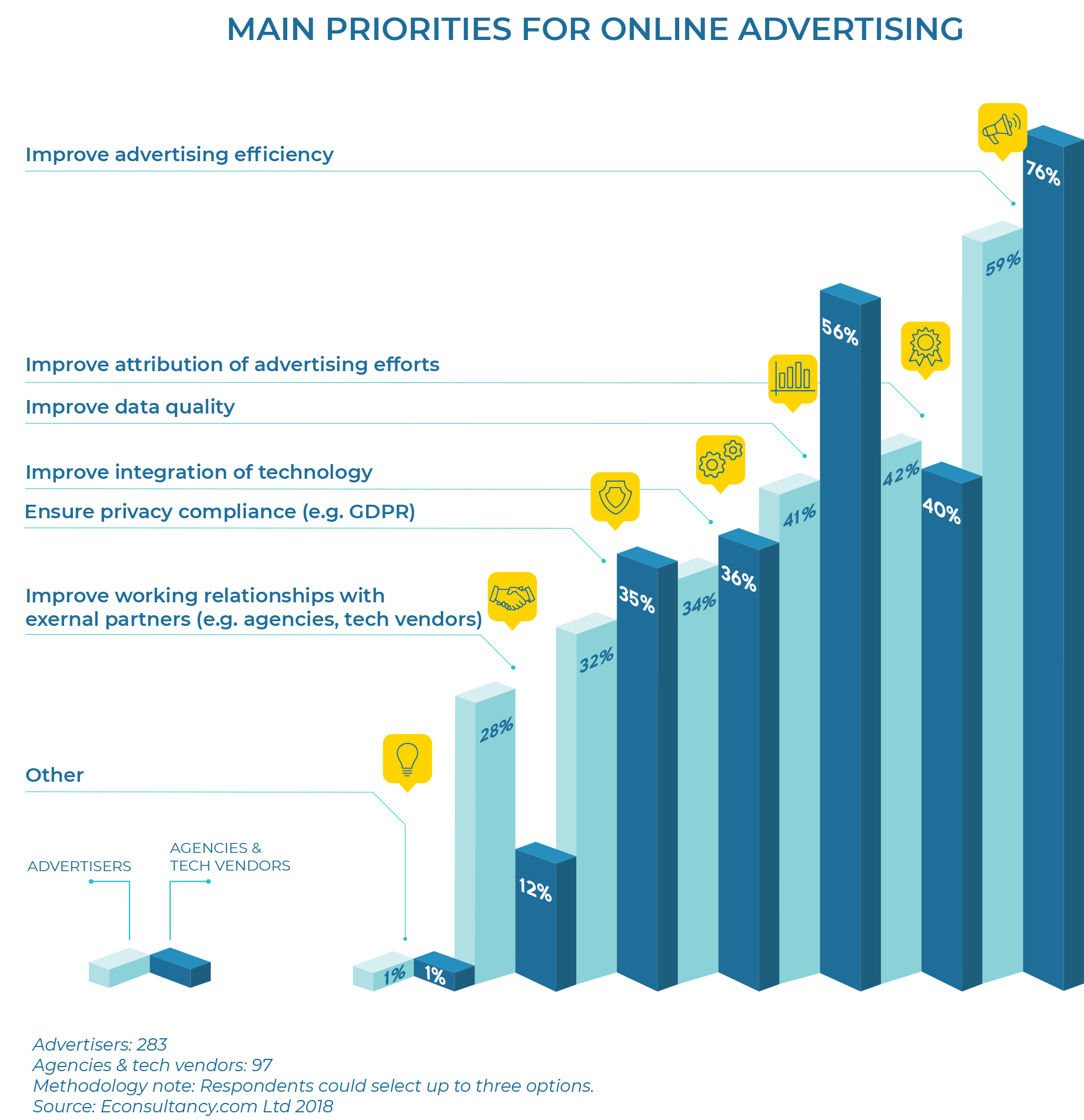
A Cheat Sheet
For Engaging the Right Programmatic Partner for Your Business
 Here’s a tick list of some of the questions that may help you find the right programmatic partner:
Here’s a tick list of some of the questions that may help you find the right programmatic partner:
-
Will I have a dedicated Account Manager assigned to manage my campaigns?
-
How often will my campaign/s be optimised - per day, per week or per month?
-
Tell me about your level of service. For example, how often will you conduct performance reviews to go through key performance metrics?
-
Do you offer an omnichannel reporting solution (insights and analytics dashboard) so we can easily gain visibility on the performance of our campaign/s 24/7?
-
[for agency] Do you operate the programmatic demand side software as a licensed provider in-house?
-
[for eCommerce marketers] Do you have in-house capabilities to design and build dynamic creative assets for running ads based on data-feed.
-
Do you have a brand safety policy or solution and is it integrated into your platform/s?
-
How often will we receive a programmatic campaign performance report?
-
What is your fee structure per month/quarter/annum?
-
Do you have technical expertise in-house or on-hand to troubleshoot any technical, creative or optimisation issues that may be affecting performance OR do you run a ticketing system?
-
Will you be assisting us with the creative design and build of our programmatic display / video/ social/ native/ audio/ connected TV creative assets?
-
Does your fee structure include updating of new creative assets to the platform/s or is this additional cost?
-
How transparent is your reporting? Will we be able to see exactly how much of our media budget is being allocated and spent per channel ?
-
What happens if my campaign is not performing to our desired goals and KPIs?
-
How many programmatic campaigns do you have under your belt to date?
- Do you have any relevant case studies and client references you could share with us?
The Marketer’s Guide to Programmatic Advertising
© ADGILITY 2025
05 The Cost of Programmatic Advertising
Is Programmatic Advertising Expensive?
There is no ‘one size fits all’ budget for running programmatic advertising, simply because no two businesses will have the exact same objectives, goals and business aspirations.
The beauty of programmatic is its agile nature; it can be tailored to your budget, your style of business and the type of campaign that will best
The ‘Agile’ Nature of Programmatic
We know, it’s tricky to get your head around at first.
But unlike traditional media placement, where you’re locked
It gives you the freedom and flexibility to set your bids and only pay market rates (or what the actual ad placement is worth at the time), rather than being locked down to one or a few ad placements where you ‘think’ your audience is engaged.
So, in a
Sounds Good, But How Much Do I Need to Invest to Succeed?
Adgility runs programmatic campaigns for growing brands with budgets ranging from $10K to $200K per month, with media spends fluctuating over some months according to how the campaign is ‘serving out’ or progressing towards fulfilling the advertiser's goals and KPIs.
For example, if our advertiser sets a quarterly budget for reaching an online sales target, we may need to firstly focus on scaling their brand awareness and finding new audiences online. This might increase our media spend over the first few months, as we’ll be focused on using the prospecting function of programmatic to serve more ad impressions over multiple channels to find and connect new audiences at scale.
Once we’ve generated enough qualified traffic and data, then our sights will be set on retargeting (or bringing back these highly engaged prospects to complete our goal) - a lead sign up or sale. This could potentially decrease our spend and increase conversion rates until we add prospecting back into the mix.
How to Establish a Working Budget
If you’re working out your programmatic budget, ask yourself the following questions:
- What are my goals and KPIs and how am I going to attribute success?
- How much time do I have to achieve them?
- What are my existing web traffic and conversion rates online?
- Will I need helping
designing andbuilding my creative assets? - Will I be running other marketing channels and advertising campaigns alongside programmatic?
- Do I have a healthy database and social community to leverage?
- How long do I want to keep scaling my online presence and growing my business?
With a clear answer to each of these questions, you’re on track to justify your programmatic budget, whether it’s small or large to start with.
Programmatic Managed Service -v- Self Service Costs
Self Serve
The cost of a self service platform is usually charged as a percentage of your ad spend, usually ranging between 15%-20%.
If you’re an experienced digital marketer and have dedicated in-house capabilities to help you set up, manage and measure programmatic campaigns on a daily basis, as well as keep up with the demands of programmatic creative, there’s no harm in signing up to a plan and platform. As long as you’re happy to manage your own expectations and understand that you also may not have the have the same flexibility and know-how to move ad dollars around as freely as a managed service.
Managed Service
Programmatic managed service fees are not ordinarily published by agencies or ad tech vendors. This is simply because costs will vary depending on the size of your campaign/s, if they’re managing creative assets and level of optimisations which is dependent on your overall goals and objectives. On average, managed service fees can vary from $5K-$20K per month or higher if you are using additional ad serving technology and accessing 3rd party data sources.
As programmatic advertising continues to evolve on all fronts, a managed service can be viewed as a more appealing option to ensure you’re achieving all your goals and not leaving valuable ad dollars on the table. Also, if you’re new to programmatic advertising, a self-serve option isn’t always the ideal way to start.
Minimum Spend vs No Minimum Spend
Some agencies and ad tech vendors (like
Other programmatic vendors don’t impose any minimum spend. However, be aware that you’ll be limited by the type of media channels and ad inventory you’re able to run (like video or rich media display), due to the fact they cost more to run and can’t achieve scale (reach or frequency) with smaller
The Marketer’s Guide to Programmatic Advertising
© ADGILITY 2025
06 Conclusion
That’s All, Folks!
Congratulations, you made it! It wasn’t always an easy read, we know. But we hope you’ve come out the other side of this guide with an appreciation of the power of programmatic advertising, some actionable takeaways you can put to work straight away, and some impressive acronyms to dazzle the boss with.
To recap, programmatic technology powers more personal, meaningful, targeted and effective digital advertising. It allows brands to reach the right people, at the right time, with the right message - and allows them to enjoy far greater return on their ad spend.
We’re sure that you appreciate what kind of difference these benefits can make to a company’s bottom line. We’re also sure that you might be feeling a little intimidated by the dea of starting down your own programmatic journey. Don’t fret; an agency partner like Adgility can help you to navigate the programmatic path to success.
If you’d like to learn more about using programmatic advertising to grow your business, and more about letting us help you along the way, get in touch with us today.
About Adgility
Adgility is Australia’s fastest growing digital display performance suite for helping growing brands compete online and drive revenue like never before.
As a unified omnichannel solution, Adgility brings together everything you need to succeed online – programmatic media buying, data-driven creative and advanced analytics, all fully managed and made affordable for fast, sustainable growth.
Aspiring marketers, brands and agencies use Adgility to streamline their web display, video, social, CTV, audio and email channels, reduce complexity and leverage the best strategic media expertise to drive higher ROI from their advertising.
Find out more about how Adgility can help you leverage the power of programmatic advertising to accelerate growth and build a long-term strategy for the future.
Contact Adgility
Level 2. 24/100 Collins Street, Alexandria
Sydney, NSW 2015
Call: +612 9319 3811
Email: bemore@adgility.com.au
Programmatic  Advertising Case Studies
Advertising Case Studies
 1. Stamford Hotels & Resorts
1. Stamford Hotels & Resorts

Stamford Hotels & Resorts fights back at rising OTA commissions by using programmatic advertising to establish brand differentiation and increase direct room revenue nationally.
A growing reliance on the OTA’s (online travel agents) like Expedia and Hotels.com to fill rooms has resulted in rising booking commissions and decreasing revenue for small and large hotel chains.
Learn how we helped Stamford win the battle by strengthening their online brand presence and dramatically increasing direct room revenue nationally by using the same powerful programmatic advertising technology these big players use to establish, grow and maintain market share.
Click here for Stamford Hotels & Resorts Case Study
2. IPSTAR Broadband
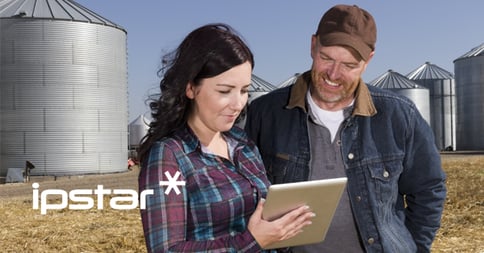
Regional satellite broadband company IPSTAR takes on telecommunications giant and positions itself as market leader using programmatic enhanced audience targeting.
IPSTAR has always been committed to providing better broadband experience to outback Australians with faster speeds, larger downloads and cheaper plans. With Telstra seen as the ‘service provider of the bush’ it was difficult for smaller providers to gain brand recognition and grow market share.
Find out how we used programmatic advertising to help IPSTAR become Australia’s leading broadband satellite providers across some of Australia's largest regional and rural markets.
Click here for IPSTAR Case Study
3. Australian Family Lawyers

Online startup voted ‘Australia’s most innovative family law firm’ by educating people with relevant content using advanced programmatic lead generation.
Innovative law startups and online do-it-yourself document practices continue to disrupt the law industry at a rapid pace. People are searching and requesting more information online, wanting to educate themselves before moving forward. For savvy online marketers, this online ‘courtship’ is an opportunity like never before.
Discover how we used programmatic advertising to scale online brand presence, target specific in-market audiences that turned Australian Family Lawyers into a lead generation machine.
Click here for AFR Case Study
4. PureForm Golf

PureForm Golf uses programmatic advertising to build market demand and drive online bookings to become Australia’s Number One custom golf club fitter.
The people at PureForm believe every golfer can improve their game by precision matching their clubs to their swing. In fact, they have the technology and stats to prove it.
Find out how we used programmatic advertising to reach a relevant ‘golfing’ audience across contextually relevant environments faster and more efficiently, scaling online brand presence rapidly and increasing online bookings through more qualified lead generation.
Click here for PureForm Golf Case Study

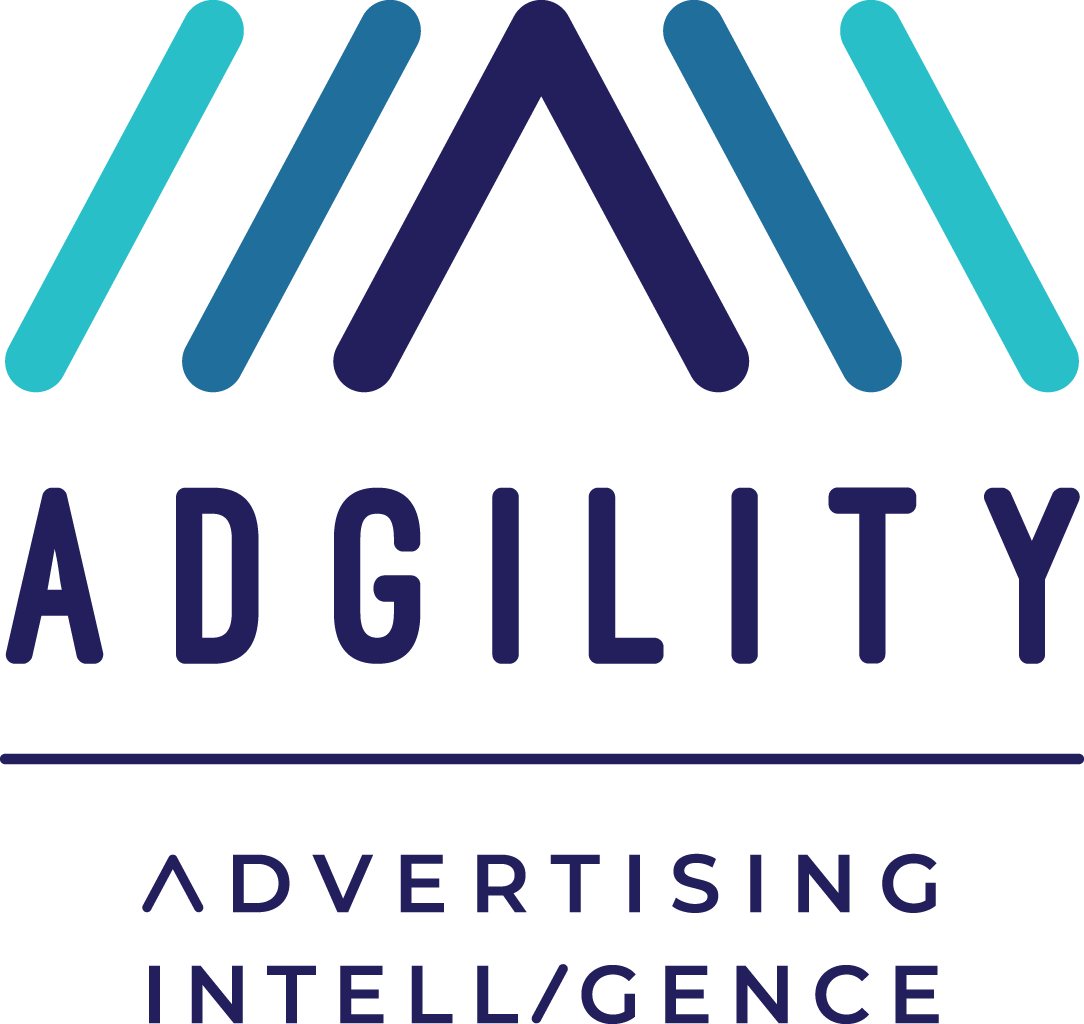
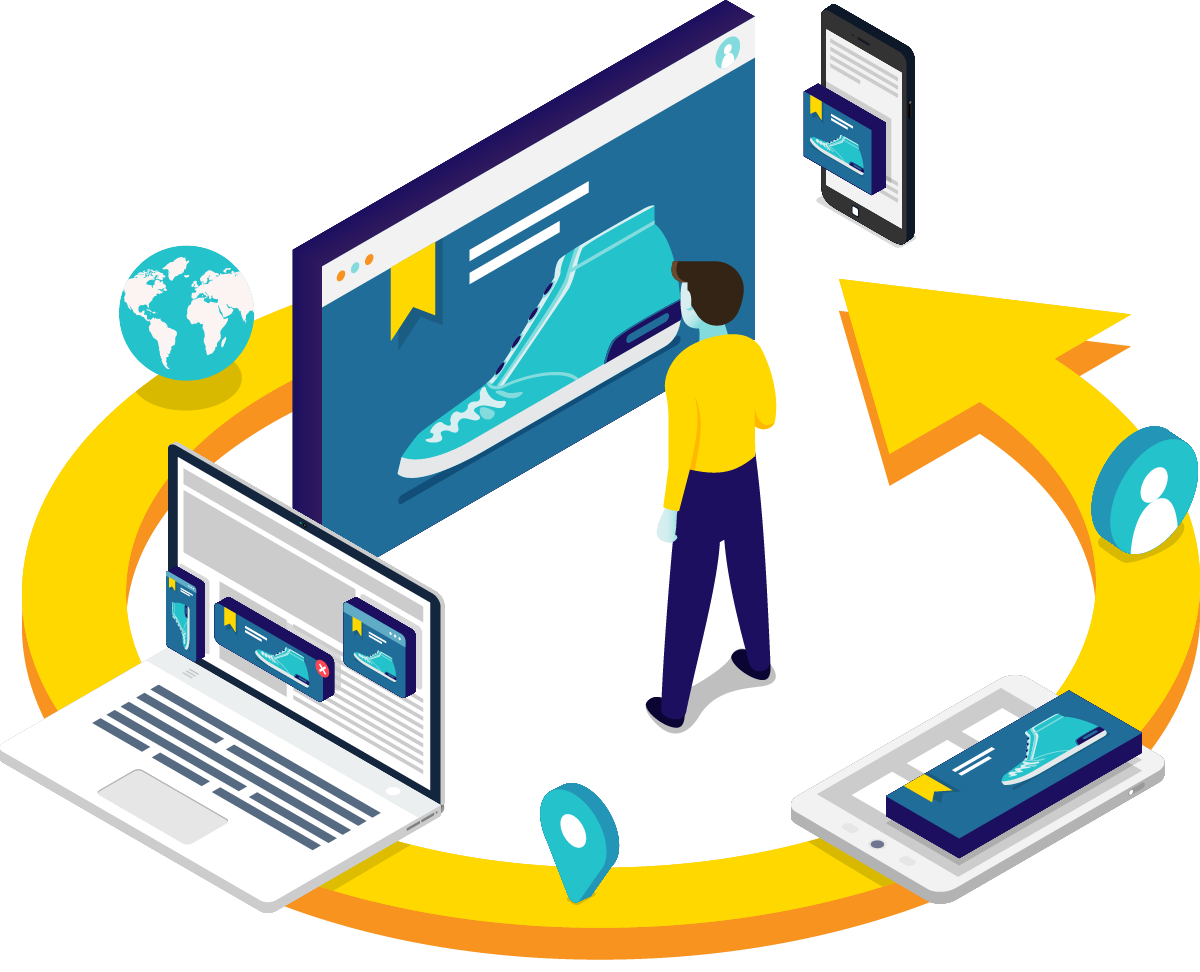
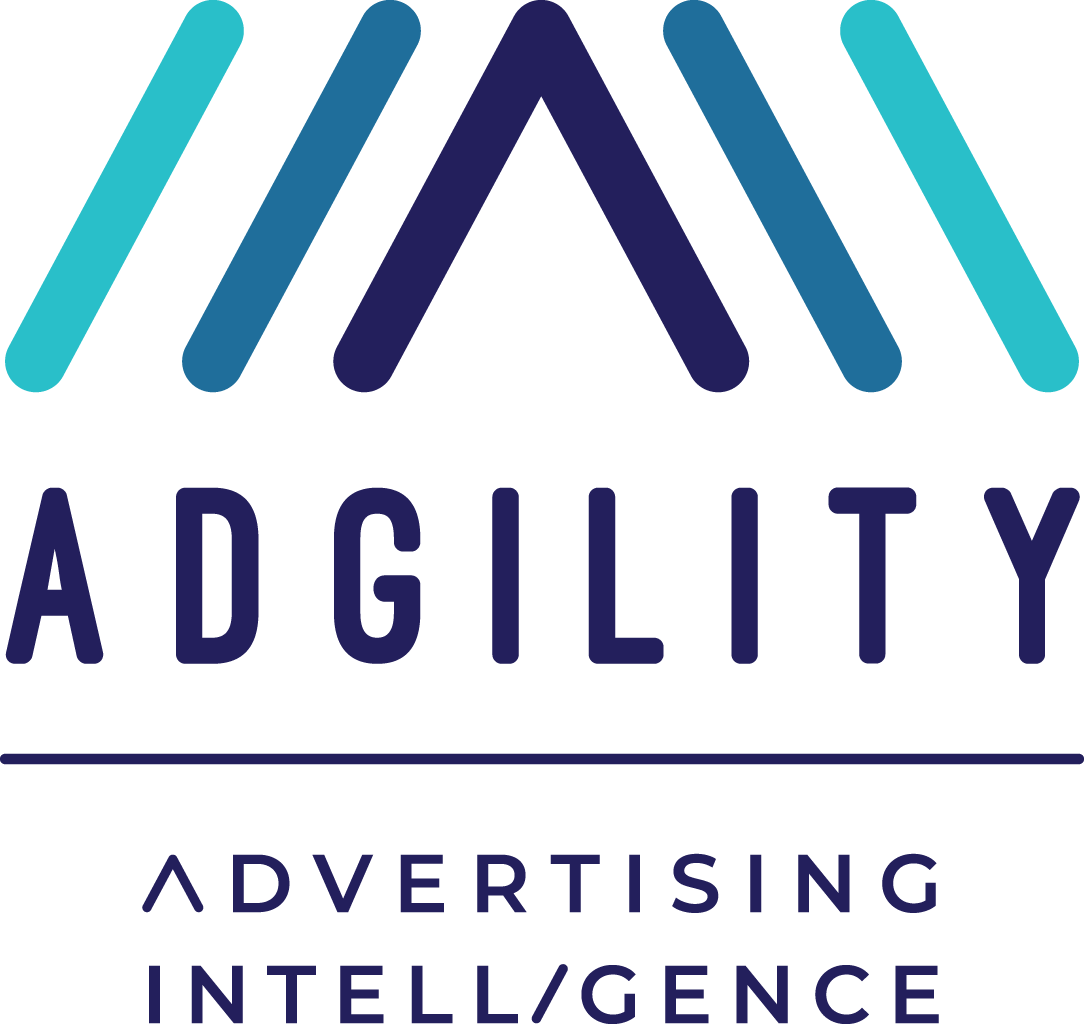

.jpg?width=200&name=Liz_Photo_H%26S%20(1).jpg)


